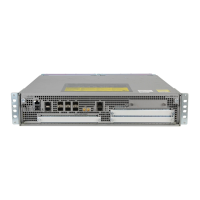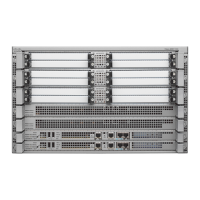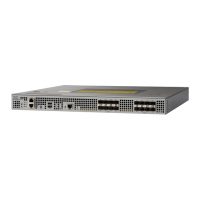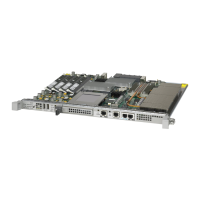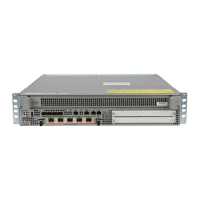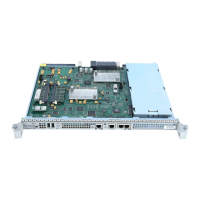9-3
Cisco ASR 1000 Series Aggregation Services Routers SIP and SPA Software Configuration Guide
OL-14127-08
Chapter 9 Overview of the Ethernet SPAs
Restrictions
• Per-port byte and packet counters for policy drops, oversubscription drops, CRC error drops, packet
sizes, unicast, multicast, and broadcast packets
• Per-VLAN byte and packet counters for policy drops, oversubscription drops, unicast, multicast, and
broadcast packets
• Per-port byte counters for good bytes and dropped bytes
• Multiprotocol Label Switching (MPLS)
• Quality of Service (QoS)
• Hot Standby Router Protocol (HSRP)
Following are the additional features supported by the 2-Port Gigabit Synchronous Ethernet SPA on the
Cisco ASR 1000 Series Routers:
• L1 clock frequency distribution—In this mode, the 2-Port Gigabit Synchronous Ethernet SPA
recovers the received clock, synchronizes it to a traceable source, and uses it to transmit data to the
next node.
• A Building Integrated Time Source (BITS) interface for an external Synchronization Supply Unit
(SSU) or a BITS device can be used as a clock source, or to clean up the accumulated wander on
either a system or a recovered clock.
• The GPS timing interface is used for external GPS devices, and can be selected as either an input or
an output reference. The GPS timing interface supports connectivity to the GPS clock.
• In order to maintain a communication channel in synchronous network connections, Ethernet relies
on a channel called Ethernet Synchronization Messaging Channel (ESMC) based on the IEEE 802.3
Organization-Specific Slow Protocol. ESMC relays the SSM code that represents the quality level
of the Ethernet Equipment Clock (EEC) in a physical layer.
• Supports IP Subscriber Awareness over Ethernet.
Restrictions
These restrictions apply to the 2-Port Gigabit Synchronous Ethernet SPA introduced in Cisco IOS XE
Release 3.2:
• Synchronous SPA features are compatible with the 2-Port Gigabit Synchronous Ethernet SPA.
• The maximum theoretical bandwidth of the 2-Port Gigabit Synchronous Ethernet SPA is 2 Gbps full
duplex. The actual performance is limited by the capability of either the host or the jacket card.
• In a failover scenario, the SPA does not perform any autoswitchover to a secondary clock source,
even if the secondary reference is configured on the same SPA. If the primary clock goes down, the
platform explicitly sets the secondary clock as source.
Synchronous Ethernet
Synchronous Ethernet (SyncE) is a procedure in which a physical layer interface is used to pass timing
from node to node in the same way that timing is passed in SONET or SDH. SyncE, defined by ITU-T
standards, such as G.8261, G.8262, G.8264, and G.781, leverages the PHY layer of Ethernet to transmit
frequency to remote sites. SyncE over Ethernet provides a cost-effective alternative to the networks. For
SyncE to work, each network element must, along with the synchronization path, support SyncE.
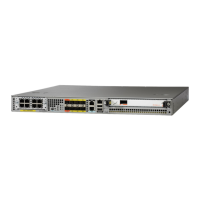
